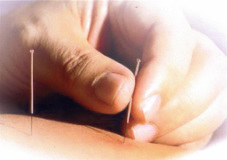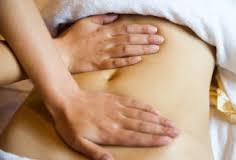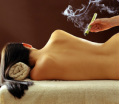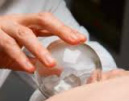Acupuncture & Oriental Medicine
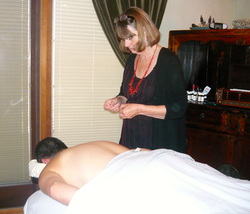
The art and practice of Oriental Medicine includes acupuncture, herbal prescription, nutrition, numerous forms of therapeutic massage, Qi Gong and Tai Chi (movement and breathing exercises to cultivate balanced health.
All of these methods share an equally long history of development, some say over 5,000 years old. Culturally steeped in the philosophy of the ancients is the sacred understanding and practice of longevity; hence the commitment of maintaining balanced health and vitality. It is a common story lore or fact that if the emperor became sick, the peril of the doctor was in question and form of payment was only given to keep the people well. A large disgrace came to the physician if their patient became ill.
A challenge for the Western Practitioner is addressing the importance and commitment of health and wellness. Although great strides are being made in the Health Care System supporting wellness, we still find a lack of support in the Western Medical Model. Unfortunately patients are often referred to us from doctors as the incurables and patients often arrive to us as the last alternative. We always welcome and are inspired by collaborating and being partners in your journey of maintaining wellness and balance.
Theory of Oriental Medicine
The practice of Oriental Medicine is based on a unique theoretical system. The theory explains how channels of energy run in certain orderly patterns throughout the body. Energy flows (Qi = life force) through these energy channels (Meridians) that nourish the internal organs, with each organ having a defined role in the holistic system of the body. Example: Liver nourishes the eyes and tendons, is responsible for maintaining a free flowing energy system. We often find an imbalance of Liver energy to be in direct relation to elevated Stress and inflexibility of mind and body. An obstruction of the energy flow results in generalized pain and fatigue. Prolonged stagnation within these pathways affects organ systems and will lead to poor health and disease.
The philosophy of Oriental Medicine uses images and metaphors from nature to describe the processes of health and disease. Yin and Yang, commonly known, refer to opposites; as in the sunny and shady side of a mountain, the sun and the moon, female and male As practitioners we diagnose using tongue, pulse, health histories, and palpation of point systems to diagnose and treat yin and yang balance.
The Five Elements (Fire, Earth, Metal, Water, and Wood), are another important paradigm of health and disease in Oriental Medical Practice and Diagnosis. This system allows for a more detailed description of the cycles of nature and the interaction of different forces. Example: the Fire Element links together the phenomenon of an erupting volcano, the soft glow of the candle flame, and the emotions of love and joy connected to the human heart. The Earth Element connects the soil that we grow our food in, and the digestive organs that assimilate the nutrients found in our body and the ability to digest and eliminate. This beautiful understanding and artful practice helps us to see that all the differences in our world are simply parts of the whole.
In Acupuncture Therapy, along these great rivers of energy (Meridians) there are portals (doorways) that the practitioner stimulates thru touch or the use of fine hair like pins that elicit a fire energy thru these channels. A complex system of point theory is studies by the practitioner, as well as the use of Acupuncture points and the thoughtful formulation of the innate understanding of Yin/Yang and the Five Elemental systems.
More than a technique of inserting thread like needles along the Meridian lines which are inserted into specific point locations, Acupuncture is a complex system of diagnosis taking into consideration the patient as a whole.b The practitioner practices the science of Oriental Medicine discerning "the patterns of disharmony".
Acupuncture treats to strengthen, prevent disease, control pain and achieve longevity; increasing both the quality of your life and the ability to thrive in balance and well-being.
All of these methods share an equally long history of development, some say over 5,000 years old. Culturally steeped in the philosophy of the ancients is the sacred understanding and practice of longevity; hence the commitment of maintaining balanced health and vitality. It is a common story lore or fact that if the emperor became sick, the peril of the doctor was in question and form of payment was only given to keep the people well. A large disgrace came to the physician if their patient became ill.
A challenge for the Western Practitioner is addressing the importance and commitment of health and wellness. Although great strides are being made in the Health Care System supporting wellness, we still find a lack of support in the Western Medical Model. Unfortunately patients are often referred to us from doctors as the incurables and patients often arrive to us as the last alternative. We always welcome and are inspired by collaborating and being partners in your journey of maintaining wellness and balance.
Theory of Oriental Medicine
The practice of Oriental Medicine is based on a unique theoretical system. The theory explains how channels of energy run in certain orderly patterns throughout the body. Energy flows (Qi = life force) through these energy channels (Meridians) that nourish the internal organs, with each organ having a defined role in the holistic system of the body. Example: Liver nourishes the eyes and tendons, is responsible for maintaining a free flowing energy system. We often find an imbalance of Liver energy to be in direct relation to elevated Stress and inflexibility of mind and body. An obstruction of the energy flow results in generalized pain and fatigue. Prolonged stagnation within these pathways affects organ systems and will lead to poor health and disease.
The philosophy of Oriental Medicine uses images and metaphors from nature to describe the processes of health and disease. Yin and Yang, commonly known, refer to opposites; as in the sunny and shady side of a mountain, the sun and the moon, female and male As practitioners we diagnose using tongue, pulse, health histories, and palpation of point systems to diagnose and treat yin and yang balance.
The Five Elements (Fire, Earth, Metal, Water, and Wood), are another important paradigm of health and disease in Oriental Medical Practice and Diagnosis. This system allows for a more detailed description of the cycles of nature and the interaction of different forces. Example: the Fire Element links together the phenomenon of an erupting volcano, the soft glow of the candle flame, and the emotions of love and joy connected to the human heart. The Earth Element connects the soil that we grow our food in, and the digestive organs that assimilate the nutrients found in our body and the ability to digest and eliminate. This beautiful understanding and artful practice helps us to see that all the differences in our world are simply parts of the whole.
In Acupuncture Therapy, along these great rivers of energy (Meridians) there are portals (doorways) that the practitioner stimulates thru touch or the use of fine hair like pins that elicit a fire energy thru these channels. A complex system of point theory is studies by the practitioner, as well as the use of Acupuncture points and the thoughtful formulation of the innate understanding of Yin/Yang and the Five Elemental systems.
More than a technique of inserting thread like needles along the Meridian lines which are inserted into specific point locations, Acupuncture is a complex system of diagnosis taking into consideration the patient as a whole.b The practitioner practices the science of Oriental Medicine discerning "the patterns of disharmony".
Acupuncture treats to strengthen, prevent disease, control pain and achieve longevity; increasing both the quality of your life and the ability to thrive in balance and well-being.
